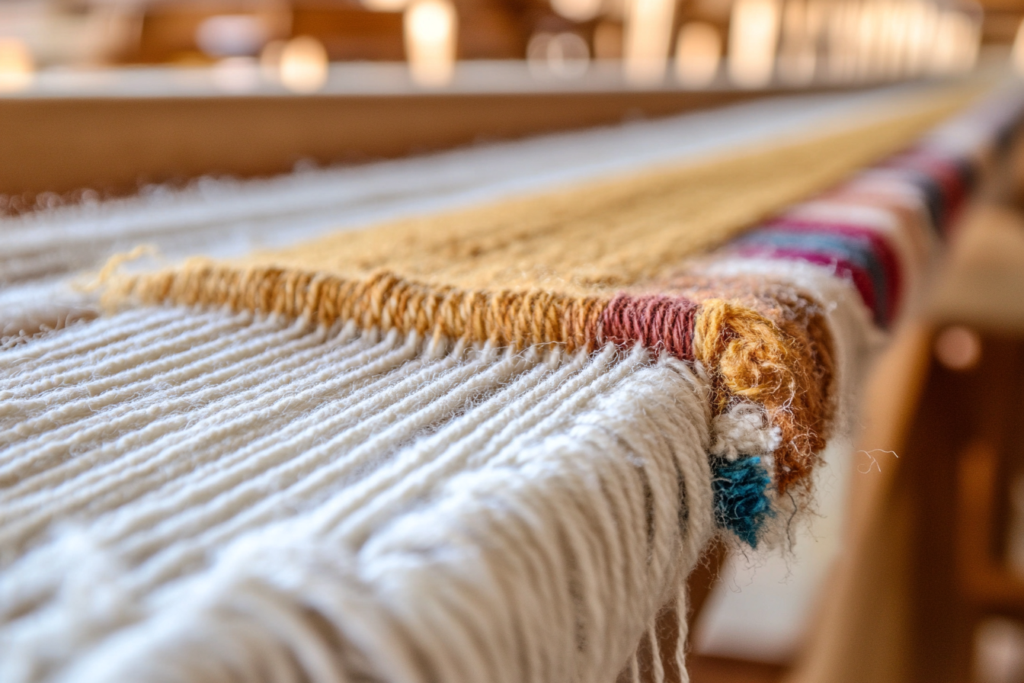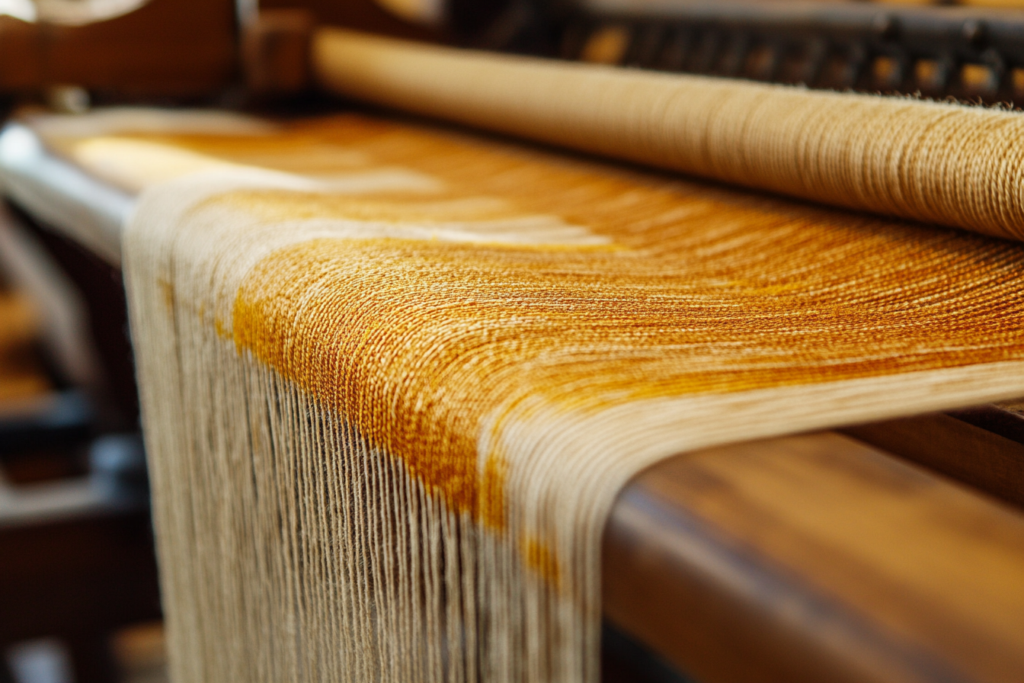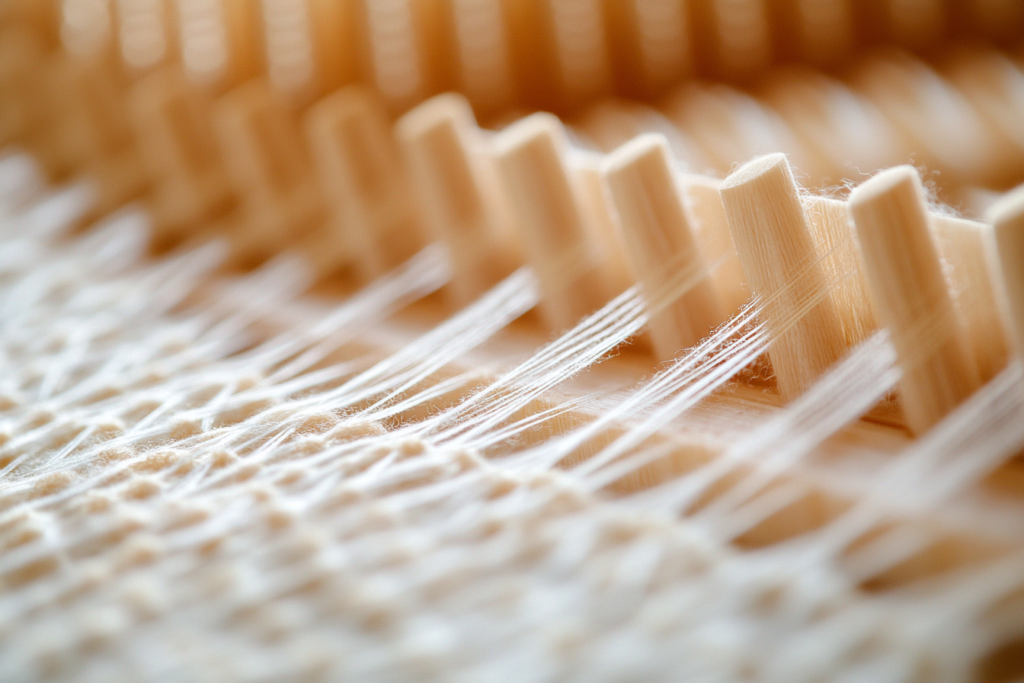Double Reverse (Links-Links) Structure: A Convex and Concave Stitch Formation
Meta Description: The double reverse (links-links) structure is a stitch type created using a double-needle panel and dual warp hooks, allowing simultaneous convex and concave knitting. Learn how this advanced knit structure works.
What is the Double Reverse (Links-Links) Structure?
The double reverse (links-links) structure is a specialized knitting stitch formation that creates alternating convex and concave patterns. This structure is achieved using an automated loom with a double needle panel and a synchronized set of double warp hooks, allowing the top and bottom needles to knit simultaneously.
This technique produces a textured, flexible, and durable knit fabric, commonly used in high-end knitwear, technical textiles, and performance fabrics.


Key Features of the Double Reverse (Links-Links) Structure
✔ Requires a Double-Needle Panel – Allows top and bottom layers to be knitted at the same time.
✔ Uses Dual Warp Hooks – Ensures synchronized knitting of convex and concave patterns.
✔ Creates a Reversible, Textured Knit – Produces a structured, flexible, and visually dynamic fabric.
✔ Used in Advanced Knitwear & Textiles – Found in fashion, performance wear, and industrial textiles.
✔ Enhances Fabric Strength & Elasticity – Suitable for both functional and aesthetic applications.
How the Double Reverse (Links-Links) Structure Works
1️⃣ A double-needle panel holds two sets of needles, positioned for simultaneous top and bottom knitting.
2️⃣ Two warp hooks guide the yarn, ensuring precise loop formation on both fabric layers.
3️⃣ Convex and concave stitches are formed in a synchronized motion, creating a three-dimensional, textured fabric surface.
4️⃣ The finished knit retains elasticity, durability, and a reversible structure, making it versatile for different applications.
💡 Tip: This structure is best suited for high-performance knits requiring both stretch and stability.
Advantages of the Double Reverse (Links-Links) Structure
✔ Reversible Fabric Structure – Offers two-sided versatility in knitwear and textiles.
✔ Enhanced Flexibility & Stretch – Ensures comfort and ease of movement.
✔ Increased Durability – Ideal for high-wear applications like sportswear and industrial textiles.
✔ Unique Textural Appearance – Creates visually dynamic knit patterns.
✔ Stronger Stitch Integrity – Reduces the risk of snagging or unraveling compared to single-knit structures.
Common Uses of the Double Reverse (Links-Links) Structure
📌 Performance Knitwear & Sportswear – Enhances moisture-wicking, flexibility, and durability.
📌 Luxury Knit Garments – Creates unique, reversible textures for high-end fashion.
📌 Seamless Garments & Compression Wear – Provides enhanced stretch and recovery.
📌 Industrial & Technical Textiles – Used in protective clothing and innovative fabric applications.
📌 Decorative Knit Designs – Adds visual depth and textural contrast in fashion fabrics.
Double Reverse (Links-Links) Structure vs. Other Knit Structures
| Feature | Double Reverse (Links-Links) | Single Jersey Knit | Rib Knit | Interlock Knit |
|---|---|---|---|---|
| Stitch Appearance | Convex & concave patterns | Smooth on one side, rough on the other | Alternating knit & purl columns | Identical on both sides |
| Reversibility | Fully reversible | One-sided | Reversible | Reversible |
| Elasticity | High | Low to medium | Very high | High |
| Common Applications | Performance wear, luxury knits, industrial textiles | T-shirts, casualwear | Cuffs, collars, activewear | Structured garments, premium fabrics |
The double reverse (links-links) structure stands out due to its dual-surface effect, elasticity, and durability, making it superior for specialized knit applications.
Why Choose the Double Reverse (Links-Links) Structure?
✔ Superior Stretch & Flexibility – Ensures a comfortable fit in active and seamless wear.
✔ Advanced Fabric Technology – Provides a unique, dual-surface texture.
✔ High-Durability & Strength – Reduces fabric wear over time.
✔ Perfect for High-Performance Knits – Ideal for technical, luxury, and industrial applications.
✔ Enhances Visual & Functional Properties – Creates standout fabric aesthetics with superior performance.
Conclusion: The Advanced Engineering of Double Reverse (Links-Links) Knitting
The double reverse (links-links) structure is a highly sophisticated knitting technique that combines textural complexity, flexibility, and durability. Its use in luxury, sportswear, and technical textiles showcases its superior knitting innovation, offering both functionality and aesthetics.
As fabric technology continues to evolve, this automated, dual-layer knitting method remains essential in creating high-performance, visually dynamic textiles.



